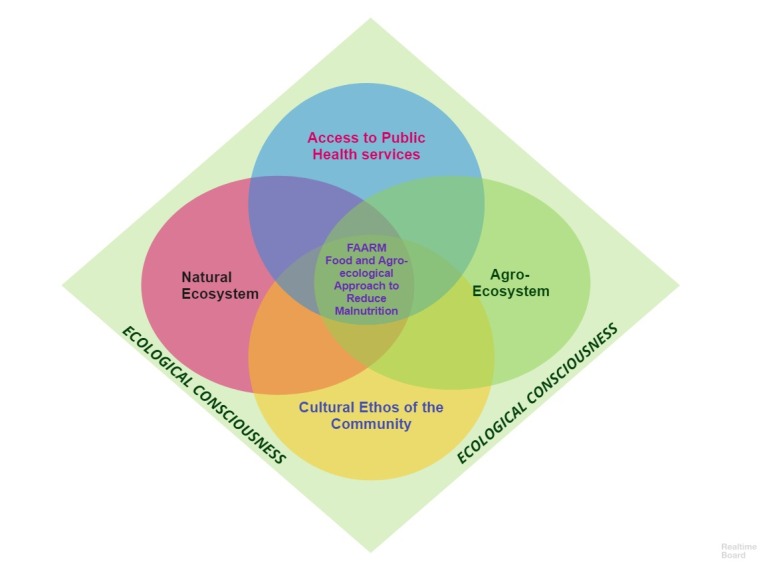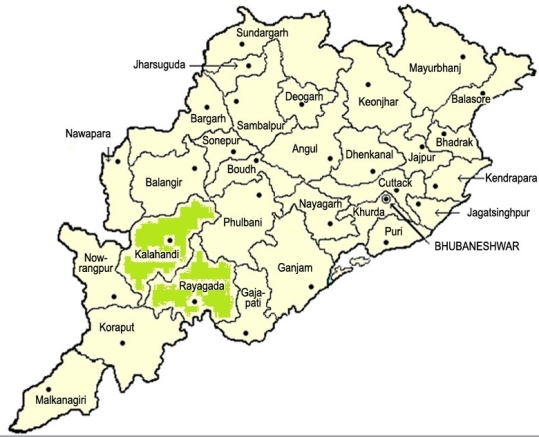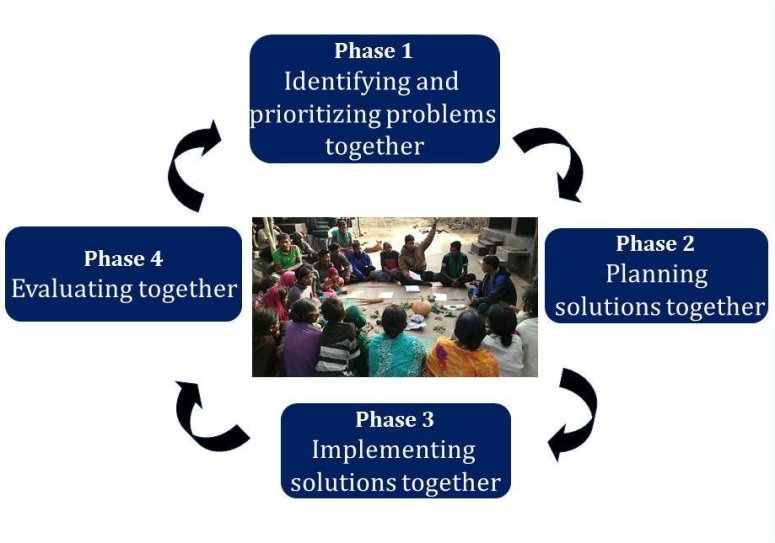The Food and Agro-Ecological Approaches to Reduce Malnutrition (FAARM) project designed and implemented by Living Farms along with Azim Premji Philanthropy Initiatives(APPI) has been working with 1,16000 adivasi and dalit families in 2150 villages in Rayagada and Kalahandi towards strengthening people’s agency to have critical reflection on the immediate, underlying and structural causes of their under nutrition, finding locally appropriate solutions and strategies, which contribute to empowerment of partnering communities, undertaking responsibilities to implement them. The cultural ethos of the community, the existing and changing the agricultural patterns and use of forests and other commons, the symbiotic relationship of the community with the forest and, accessibility and availability of public health services are the four main domains that are crucial for sustaining health and nutrition of our partnering communities.

Context
In the state of Odisha, over 34% of children are stunted and approximately 20% are wasted, according to state results from the National Family Health Survey 2015-16.1 Undernutrition remains particularly prevalent amongst tribal communities, with UNICEF reporting in 2014 that more than half of Adivasi children under five were stunted, of which a high proportion are severely stunted2. Living Farms aims to address undernutrition in Odisha by working with Adivasi communities on nutrition-sensitive agriculture, with the goal of ensuring that women and children have access to a balanced and nutritious diet. For this, we are using the participatory model “Participatory Learning & Action – Linking Agriculture & Natural Resources to Nutrition” (PLA-LANN) to improve dietary diversity. (Read more on the PLA -LANN Approach here)
Where are we working?

The FAARM project is being implemented in 6 blocks of Rayagada district, namely Muniguda, Bissamcuttak, Kashipur, Kalyansinghpur, Chandrapur and Gudari, and 2 blocks of Kalahandi district namely Thuamul Rampur and Madan Rampur. The project covers 2150 villages and over a lakh of households in these villages. The Adivasi population of Rayagada district and Kalahandi district are 56% and 29% of their total population.
Our Approach and Methods
The PLA LANN meetings are divided into 4 phases over the total project period. The 1st Phase of the PLA LANN cycle involves identifying the problems in the village, inter-generational cycle of malnutrition, and structural causes of under nutrition, the 2nd Phase concentrates on strategies to counter the identified problems, the 3rd phase involves implementing solutions and strategies that have been formulated in the 2nd phase and the 4th Phase involves evaluating the impact of the PLA LANN Meetings.

Another important intervention activity is to improve dietary diversity through Agroecology. This includes encouraging communities to adopt Nutrition gardens, Nutri-sensitive farms and collect Uncultivated foods so that they remain food and nutrition secure and have access to safe and diverse foods.
Home visits are conducted with the understanding that our 4 target groups – Pregnant women, Lactating mothers, Adolescent girls and Mothers of 7 months to 5 years child are vulnerable groups and require special attention apart from them being involved in the PLA LANN meetings to ensure that they adopt Infant and Young Child feeding practice, take nutritious balanced diets and make sure that the vegetables grown in their nutrition gardens are consumed and they are eating diverse foods.
These visits also focus on helping women and children attain their nutrition entitlements through government schemes like ICDS. Often ASHA and AWW are taken along to these visits so that these systems are activated and strengthened. It is also insisted that ASHA and AWWs attend PLA LANN meeting of their villages in order to sustain their services.
Our Team
Our field team consists of 4 Cluster coordinators, 17 Block coordinators and 160 Gram Panchayat facilitators (GPFs). Each GPF is responsible to conduct village meetings in 8-10 villages and are reaching villages which are hard to reach and requires 2 or more days of travel to the respective villages.
Our team enablers are a group of 6 people- Project Director, Team leader- PLA-LANN, Team leader MIS, Team leader- Human Resource, Programme Officer- Capacity Building, and Documentation, Communications and Advocacy Officer.
